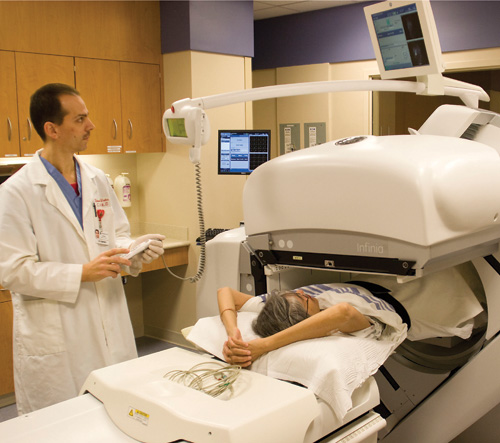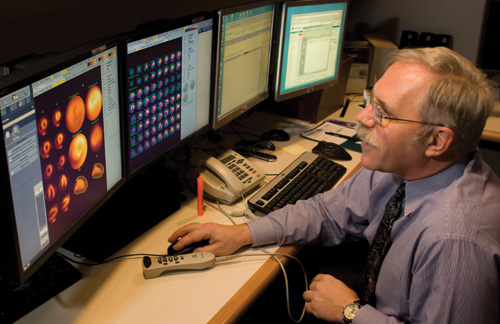Upgrades to Nuclear Medicine suite add new capabilities and enhance patient comfort


Phase 1 renovation in Nuclear Medicine transforms the section, creating a “chartless” environment that improves patient privacy and brings the section into full compliance with current radiopharmaceutical preparation standards.
The latest transformation “centralizes a full range of nuclear medicine services, including PET imaging, in our main department,” according to Medical Director Timothy Manzone, M.D. The new space—now easily accessible via the “Middle Way” corridor leading from Christiana Hospital’s main lobby—adds a 9,300-square-foot expansion that upgrades technology and services at the hospital, including six nuclear imaging suites and a PET imaging suite with two patient prep rooms.

“The move allows us to integrate PET imaging within the new space and to offer expanded cardiac PET imaging,” says Non-Invasive Services Director Tony Gialloreto. “We have also added two new large-field-of view, dual-head gamma cameras, one a hybrid imaging system incorporating CT technology, and a portable large-field-of-view gamma camera.”
Additional service upgrades include:
- The Nuclear Cardiology Stress Lab with a four-bay prep and hold unit, now located adjacent to the Emergency Department’s Clinical Decision Unit, improving comfort and access to nuclear stress testing for patients with cardiac symptoms.
- Modifications to two nuclear-medicine “hot labs” (general medicine and PET) to bring them into compliance with the latest Joint Commission and U.S. Pharmacopeia (USP) and National Formulary standards for compounding and dispensing radiopharmaceuticals.
- A large comfortable reception and patient waiting room, video surveillance and a nurse call-bell system in patient areas.
- An ambulatory injection and staging area for up to four patients.
- A Nuclear Medicine/PET physician reading room.
- A blood-volume analysis suite.
- More supply/utility rooms.
Phase 2, scheduled for completion in February, is a complete renovation of the former 2,500-square-foot Nuclear Medicine suite to accommodate administrative offices, on-call rooms and a larger classroom for training future nuclear-medicine technologists in partnership with Delaware Technical & Community College.